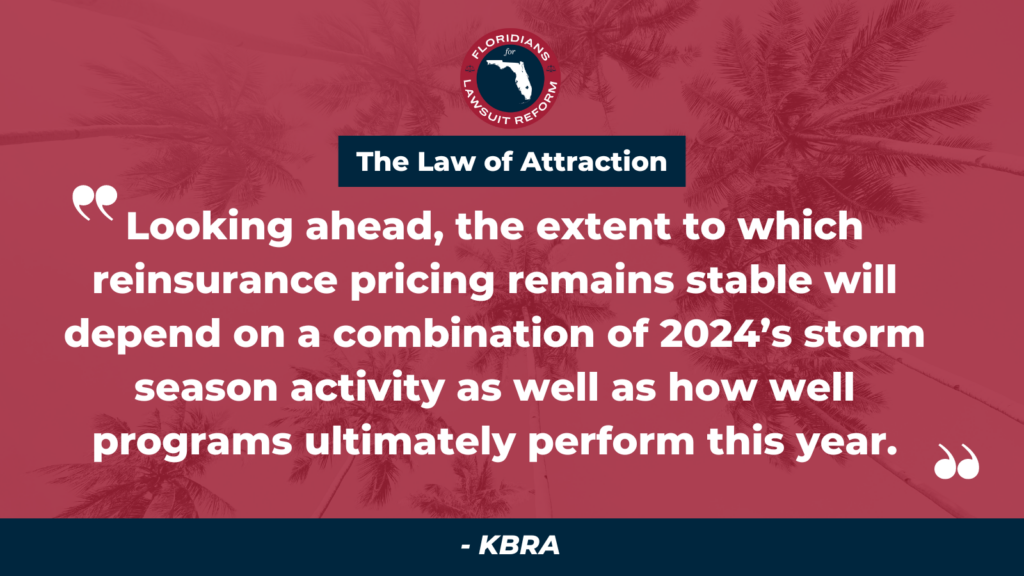
Insurers in Florida are preparing for an active Atlantic storm season in 2024 by purchasing increased reinsurance limits and coverage to protect their balance sheets, according to a recent KBRA report.
The report also highlighted that a combination of recent regulatory reforms and insurers obtaining extensive rate increases, have attracted reinsurers to participate in the market.
Increased reinsurance capacity provided opportunities for insurance companies to purchase larger towers, provide better protection for multiple-event coverage, and adjust retentions.
As the market enters the traditional peak period of hurricane activity for 2024, the average forecast at the start of the season was 23 named storms, 12 hurricanes, and five major hurricanes.
This is a dramatic increase from 2023 – the average between 2014 and 2023 was 16 named storms, seven hurricanes, and three major hurricanes -, with the figures being well above historical average, experts highlight.
Florida homeowners insurers entered 2024 in better shape after a relatively quiet storm season in 2023. Most Florida homeowner insurers reported significantly improved financial results last year and stronger year-end balance sheets.
“Across KBRA’s rated universe in the Florida homeowners market, the average YoY increase in policyholder’s surplus was 29%, predominantly due to organic capital generation from improved underwriting results,” analysts explained.
Adding: “Recent attritional loss ratios (excluding catastrophe losses) have declined sharply, frequently well below 50% and, in some cases, ranging as low as 10% to 30% for certain books of business. If this trend continues, KBRA would expect continued growth in capital bases across the sector, although pricing pressure and new business volumes will be key factors.”
Improved industry underwriting results in 2023 put downward pressure on reinsurance pricing, where rates largely remained flat and, in some instances, decreased year-over-year (YoY).
Additionally, recent regulatory reforms, combined with insurers obtaining extensive rate increases, have attracted traditional and non-traditional reinsurers to participate in the market.
“Conditions have generally rebounded, as regulatory reforms have largely addressed runaway litigation costs and insurers have obtained rate increases. These developments have made the profitability profile of current books of business more attractive to reinsurance markets,” KBRA stated.
With an increase in reinsurance capacity insurance companies saw the opportunity to purchase larger towers and provide better protection for multiple-event coverage. It also allowed primary companies to reduce retentions to lower percentages of capital and surplus, mitigating the impact of multiple large-loss events.
For 2024, analysts have observed that reinsurance pricing has moderated, commenting: “KBRA’s conversations with its rated universe following the June 1 and July 1, 2024, reinsurance renewals revealed a nearly unanimous sentiment that reinsurance pricing remained the same or declined slightly YoY.
“These companies also noted that there were generally more reinsurers participating in the renewal process and with larger pools of capacity, as many reinsurers cited the more favorable legal and underwriting environment relative to prior years. Looking ahead, the extent to which reinsurance pricing remains stable will depend on a combination of 2024’s storm season activity as well as how well programs ultimately perform this year.”
Despite insurers and reinsurers being ready to protect their balance sheets for an active hurricane storm season this year, this combined with a potentially elevated landfall risk may challenge the generally improved capital positions of Florida personal property insurers, particularly entrants with modest surplus bases or with heavy geographic exposure concentrations, KBRA concluded.
